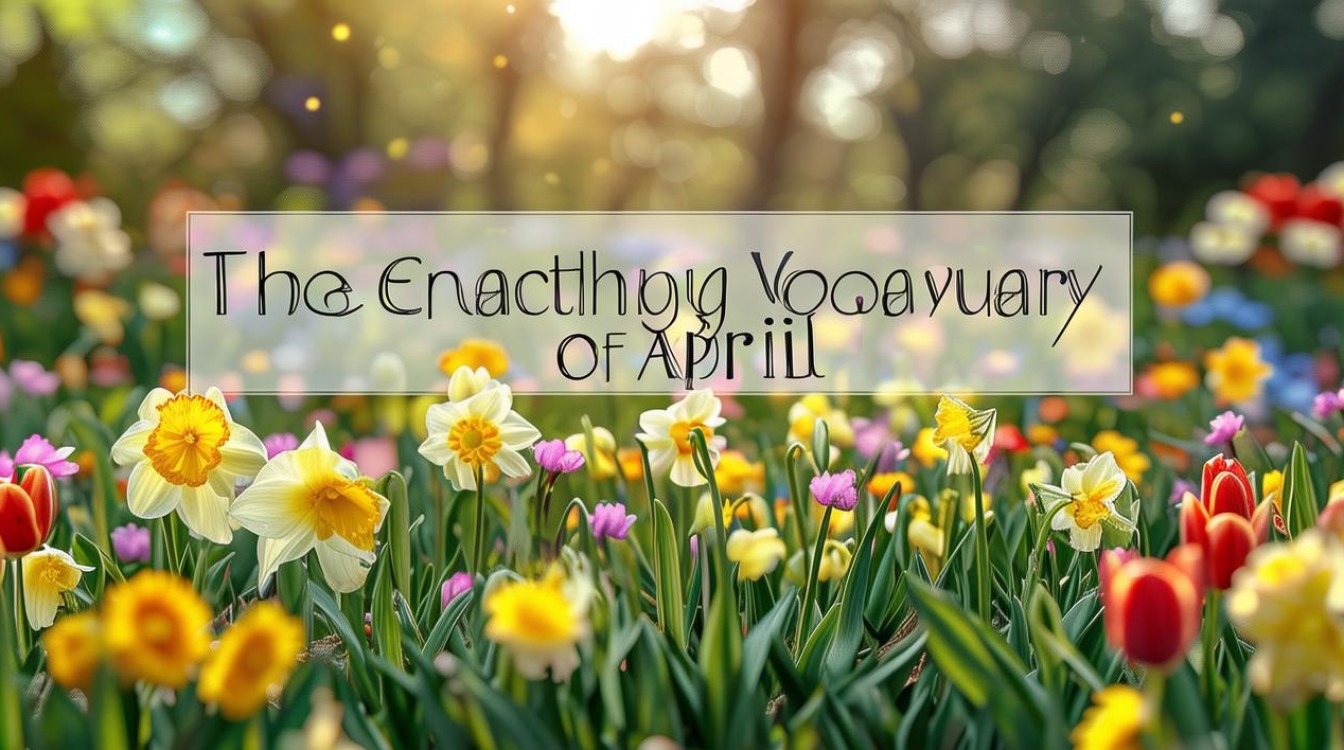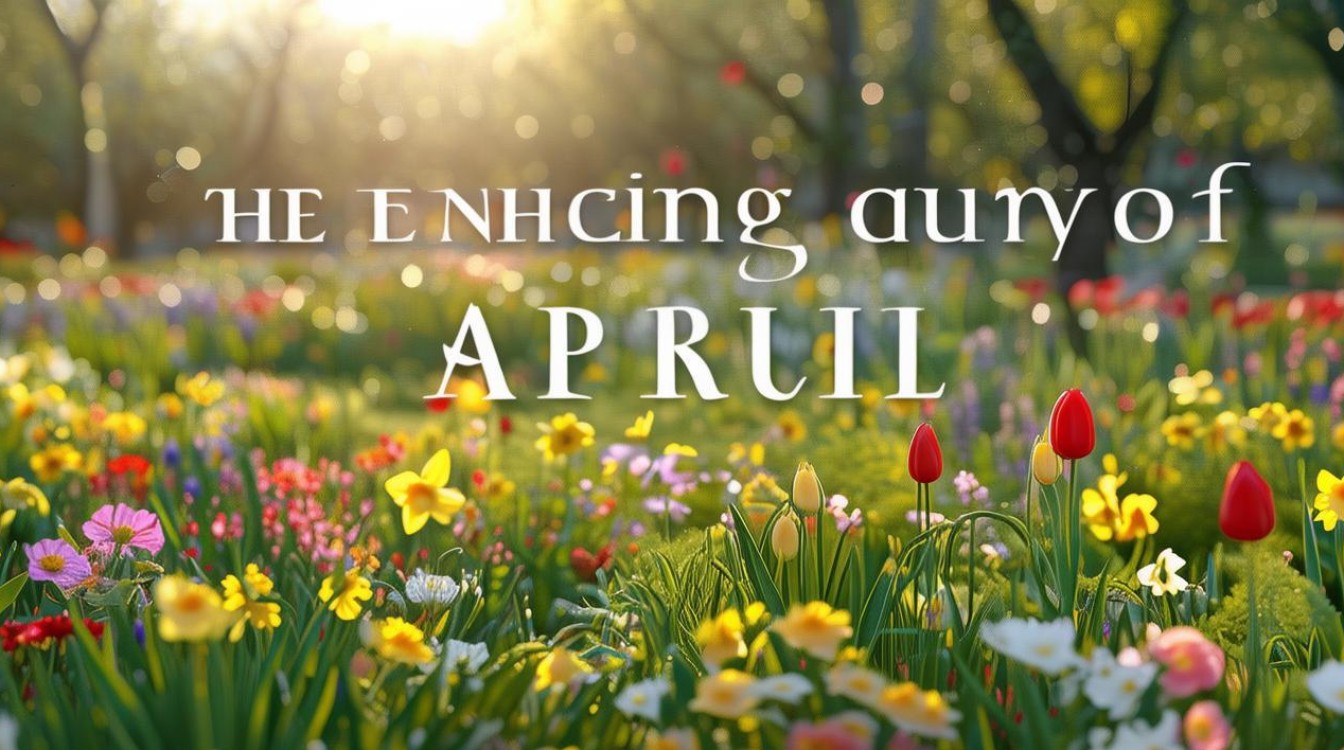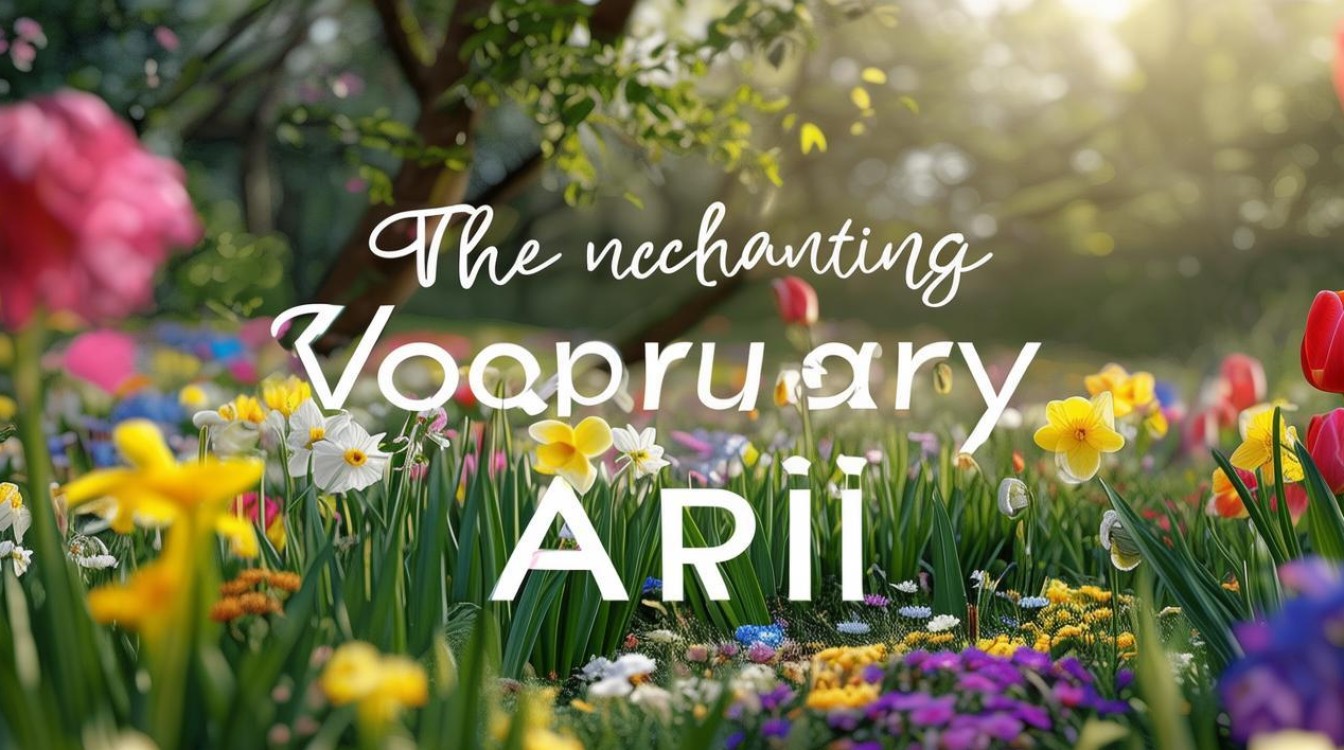April arrives like a whispered promise, bringing with it a symphony of colors, scents, and sensations. This month, nestled between the tentative warmth of March and the lush abundance of May, deserves its own lexicon—a collection of English words that capture its fleeting magic. Whether you're a writer seeking inspiration, a language enthusiast, or simply someone who revels in spring's arrival, these carefully chosen terms will deepen your appreciation for April's unique charm.

The Essence of April in Words
Verdant – Few words evoke April's lush greenery as perfectly as "verdant." Derived from the Latin viridis (green), it describes landscapes transformed by new growth. April's meadows, forests, and gardens become verdant tapestries, their vibrant hues signaling nature's renewal.
Petrichor – That earthy fragrance rising from damp soil after April showers has a name: petrichor. Coined in 1964 by Australian scientists, this poetic term combines Greek petra (stone) and ichor (the ethereal fluid of gods). It encapsulates April's ability to awaken dormant senses.
Efflorescence – Borrowed from botany, where it describes flowering, this word also metaphorically captures April's explosive creativity. Gardens experience literal efflorescence, while poets and artists often find their inspiration blooming alongside the season.
Zephyr – April's breezes are rarely harsh; they're zephyrs—gentle, warm winds from the west. In Greek mythology, Zephyrus was the god of spring, his breath coaxing flowers from the earth. The word itself sounds like a whisper through new leaves.
Peregrinate – Meaning "to travel or wander," this verb suits April's restless energy. As temperatures rise, people peregrinate through parks, along country lanes, or simply meander through city streets, rediscovering the world after winter's hibernation.
April's Weather Lexicon
The month's changeable skies inspire a rich vocabulary:
Sunshower – That magical moment when rain falls while the sun shines. Folklore attributes sunshowers to foxes marrying or witches dancing, but scientists know them as isolated precipitation under patchy clouds—a common April phenomenon.
Puddlejump – More playful than "avoid puddles," this verb perfectly describes April's childlike joy. Whether literal or metaphorical, puddlejumping represents embracing life's small, wet pleasures.

Dreich – Borrowed from Scots, this term describes dreary, damp weather—the kind that lingers in early April. Unlike harsher winter terms, "dreich" carries a resigned acceptance, knowing brighter days follow.
Cerulean – April's skies shift from pale winter blues to intense cerulean—a pigment originally made from crushed lapis lazuli. The word appears in poetry and art to evoke depth and serenity.
Flora and Fauna of April
Cherryblossom – More than just a flower, this compound word symbolizes transience in Japanese culture (mono no aware). April's cherry blossoms remind us to appreciate fleeting beauty.
Tadpole – These squiggling comma-shaped creatures fill April ponds. The word combines "toad" with the Middle English pol (head), describing their oversized heads compared to tiny tails.
Forsythia – Named after Scottish botanist William Forsyth, these golden-yellow shrubs explode into bloom early in April, often before their leaves appear. Their cheerful color makes them a harbinger of spring.
Budburst – The precise moment when a leaf or flower bud splits open. Scientists track budburst dates to monitor climate change, but poets use it to describe April's quiet explosions of life.
April's Emotional Palette
Renascence – A rebirth or revival, this Renaissance-era word embodies April's spirit of renewal. Edna St. Vincent Millay's famous poem "Renascence" begins with the speaker overwhelmed by spring's intensity.
Welkin – An archaic term for the sky or heavens, often used in phrases like "make the welkin ring" (to celebrate loudly). April's clearer skies make the welkin seem closer after winter's gloom.

Lilt – A cheerful rhythm in speech or music, mirroring April's birdsong and the lighter moods of people emerging from winter. The word itself has a buoyant, melodic quality.
Velleity – A mild wish or inclination, stronger than a whim but weaker than full determination. April often stirs velleities—to start gardening, to take long walks, to begin creative projects.
April in Motion
Meander – To wander aimlessly, like a slow river or an April stroll. The word comes from the winding Maeander River in Turkey, its curves mirrored in April's unhurried pace.
Gambol – The lively jumping or skipping of lambs in spring pastures. Humans might not literally gambol, but April's energy inspires similarly spirited movements.
Dapple – To mark with spots or patches of light and shade, like sunlight filtering through April's new leaves. Gerard Manley Hopkins praised "dappled things" in his nature poetry.
April's Sensory Words
Murmuration – Typically describing starling flocks, this word also suits April's soundscape—the murmur of breezes, rustling leaves, and distant thunder. Its rhythmic syllables mimic nature's whispers.
Aureate – Golden or brilliant, from the Latin aurum (gold). April's late-afternoon light often appears aureate, gilding landscapes with a warm, transient glow.
Prolific – Producing abundant growth or creations. April is prolific in blossoms, ideas, and energy, making this word essential for describing the month's generative power.

Halcyon – Originally referring to a mythical bird that calmed the sea, "halcyon" now describes idyllic peace. April's quieter moments—between storms and before summer's intensity—feel truly halcyon.
April's Cultural Vocabulary
Paschal – Relating to Easter or Passover, both often occurring in April. From the Hebrew Pesach, this word connects the month to themes of liberation and renewal across faiths.
All Fools' Day – April 1st's tradition of pranks dates to 16th-century Europe. The French called victims poisson d'avril (April fish), possibly linking to young, easily caught fish or the zodiac sign Pisces.
Arbor Day – Founded in 1872, this tree-planting holiday falls in April in many countries. The word "arbor" comes from the Latin for tree, reminding us of April's role in reforestation efforts.
Taxonomy – A playful blend of "tax" and "taxonomy," describing the flurry of financial categorizations before April's tax deadlines in many countries. The word hints at spring's less poetic realities.
April's lexicon offers more than descriptors—it provides a way to fully experience the month. These words invite us to notice the quality of light after rain, the precise green of new leaves, and the quiet joy of wandering without purpose. Language, like spring itself, renews our connection to the world's sensory details.
The right vocabulary transforms mere observation into participation. When we name April's phenomena—petrichor, budburst, zephyr—we engage with them more deeply. This month of transitions deserves nothing less than our fullest attention, articulated through words as vibrant as the season itself.



